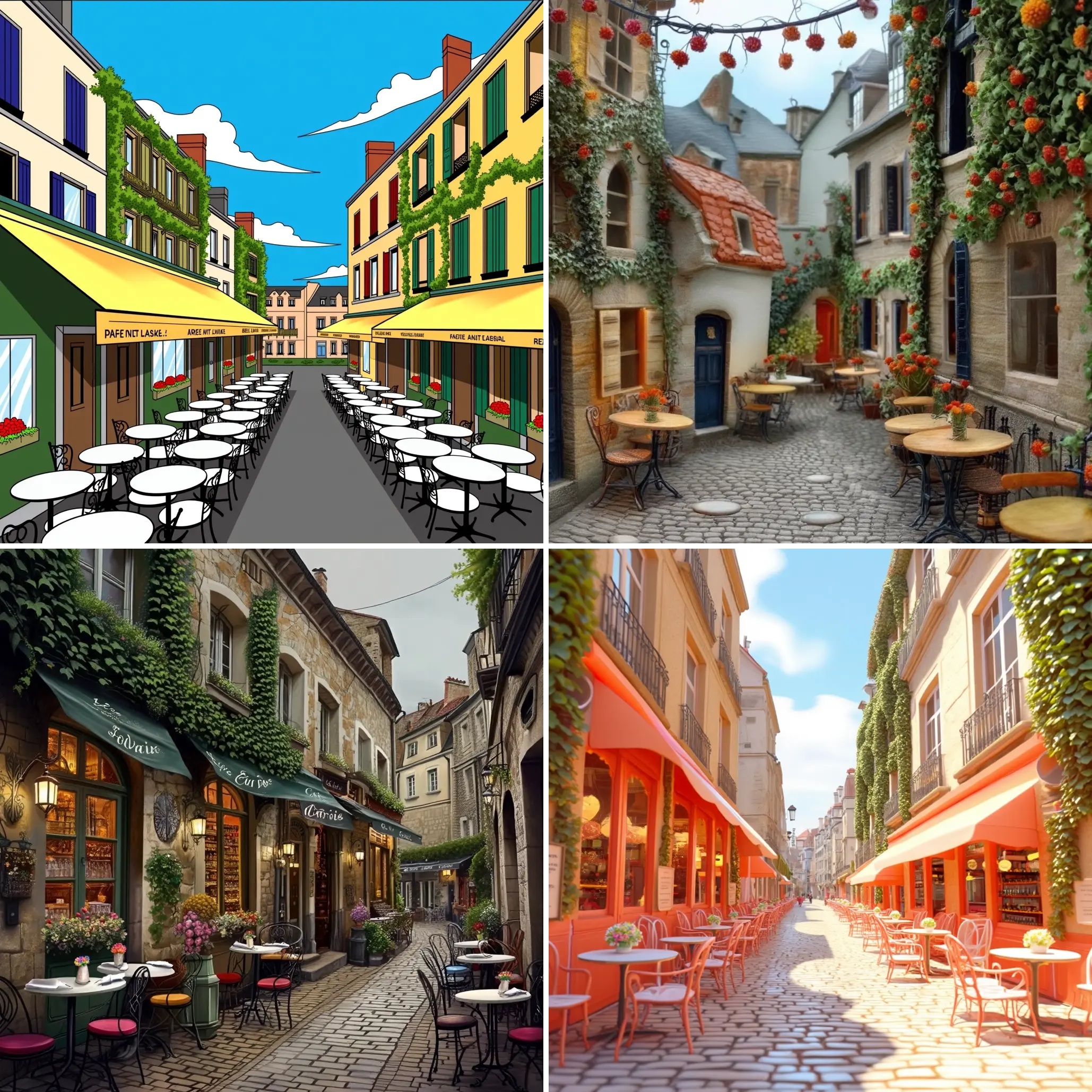ComfyUI Node: KSampler Adv. (Efficient)
KSampler Adv. (Efficient)
CategoryEfficiency Nodes/Sampling
jags111 (Account age: 4155days) Extension
Efficiency Nodes for ComfyUI Version 2.0+ Latest Updated
2025-04-02 Github Stars
1.2K
How to Install Efficiency Nodes for ComfyUI Version 2.0+
Install this extension via the ComfyUI Manager by searching for Efficiency Nodes for ComfyUI Version 2.0+- 1. Click the Manager button in the main menu
- 2. Select Custom Nodes Manager button
- 3. Enter Efficiency Nodes for ComfyUI Version 2.0+ in the search bar
Visit ComfyUI Online for ready-to-use ComfyUI environment
- Free trial available
- 16GB VRAM to 80GB VRAM GPU machines
- 400+ preloaded models/nodes
- Freedom to upload custom models/nodes
- 200+ ready-to-run workflows
- 100% private workspace with up to 200GB storage
- Dedicated Support
KSampler Adv. (Efficient) Description
Specialized node enhancing efficiency and control in AI art sampling for precise, refined outputs.
KSampler Adv. (Efficient):
KSampler Adv. (Efficient) is a specialized node designed to enhance the efficiency and flexibility of the sampling process in AI art generation. This advanced sampler allows for more granular control over the sampling steps, enabling you to fine-tune the generation process to achieve higher quality results. It is particularly useful for scenarios where you need to add noise, control the start and end steps of the sampling process, and manage the denoising level. By providing these advanced controls, KSampler Adv. (Efficient) helps you achieve more precise and refined outputs, making it an invaluable tool for AI artists looking to push the boundaries of their creative projects.
KSampler Adv. (Efficient) Input Parameters:
model
This parameter specifies the model to be used for sampling. It is essential as it defines the underlying architecture and weights that will guide the generation process.
add_noise
This parameter determines whether noise should be added during the sampling process. Adding noise can help in generating more diverse and creative outputs. The value is typically a boolean (True/False).
seed
The seed parameter is an integer that initializes the random number generator. It ensures reproducibility of the results. The default value is 0, with a minimum of 0 and a maximum of 0xffffffffffffffff.
steps
This parameter defines the number of sampling steps to be performed. More steps generally lead to higher quality results but require more computational resources. The default value is 20, with a minimum of 1 and a maximum of 10000.
cfg
The cfg (Classifier-Free Guidance) parameter is a float that controls the strength of the guidance during sampling. Higher values lead to more adherence to the conditioning inputs. The default value is 8.0, with a range from 0.0 to 100.0.
sampler_name
This parameter specifies the name of the sampler to be used. It allows you to choose from different sampling algorithms provided by the system.
scheduler
The scheduler parameter defines the scheduling strategy for the sampling steps. Different schedulers can impact the quality and style of the generated output.
positive
This parameter provides the positive conditioning input, which guides the model towards desired features in the generated output.
negative
This parameter provides the negative conditioning input, which guides the model away from undesired features in the generated output.
latent_image
The latent_image parameter is the initial latent space representation that will be refined during the sampling process.
start_at_step
This parameter specifies the step at which the sampling process should start. It allows for partial resampling and can be useful for iterative refinement.
end_at_step
This parameter defines the step at which the sampling process should end. It provides control over the duration of the sampling process.
return_with_leftover_noise
This parameter determines whether the output should include any leftover noise from the sampling process. It is typically a boolean (True/False).
denoise
The denoise parameter is a float that controls the level of denoising applied during the sampling process. The default value is 1.0, with a range from 0.0 to 1.0.
KSampler Adv. (Efficient) Output Parameters:
LATENT
The output parameter LATENT represents the refined latent space representation after the sampling process. This output is crucial as it forms the basis for generating the final image or other creative outputs. The refined latent space is expected to be closer to the desired features specified by the conditioning inputs.
KSampler Adv. (Efficient) Usage Tips:
- Experiment with different values for the
stepsparameter to find a balance between quality and computational efficiency. - Use the
add_noiseparameter to introduce variability and creativity in your outputs, especially when exploring new artistic styles. - Adjust the
cfgparameter to control the adherence to conditioning inputs, which can help in fine-tuning the output to match your vision. - Utilize the
start_at_stepandend_at_stepparameters for iterative refinement, allowing you to progressively improve the quality of your outputs.
KSampler Adv. (Efficient) Common Errors and Solutions:
KSampler Adv. (Efficient) Error: Invalid value for X_type: '<X_type>' and Y_type: '<Y_type>'.
- Explanation: This error occurs when the specified X_type or Y_type is disallowed for the current KSampler configuration.
- Solution: Check the disallowed XY_types for the KSampler Adv. (Efficient) and use a different KSampler that supports the specified types. You can refer to the suggested KSampler in the error message for an alternative.
KSampler Adv. (Efficient) Error: Model not specified.
- Explanation: This error occurs when the model parameter is not provided.
- Solution: Ensure that you specify a valid model in the input parameters to proceed with the sampling process.
KSampler Adv. (Efficient) Error: Invalid seed value.
- Explanation: This error occurs when the seed value is out of the acceptable range.
- Solution: Provide a seed value within the range of 0 to 0xffffffffffffffff to ensure proper initialization of the random number generator.
KSampler Adv. (Efficient) Related Nodes
RunComfy is the premier ComfyUI platform, offering ComfyUI online environment and services, along with ComfyUI workflows featuring stunning visuals. RunComfy also provides AI Playground, enabling artists to harness the latest AI tools to create incredible art.


